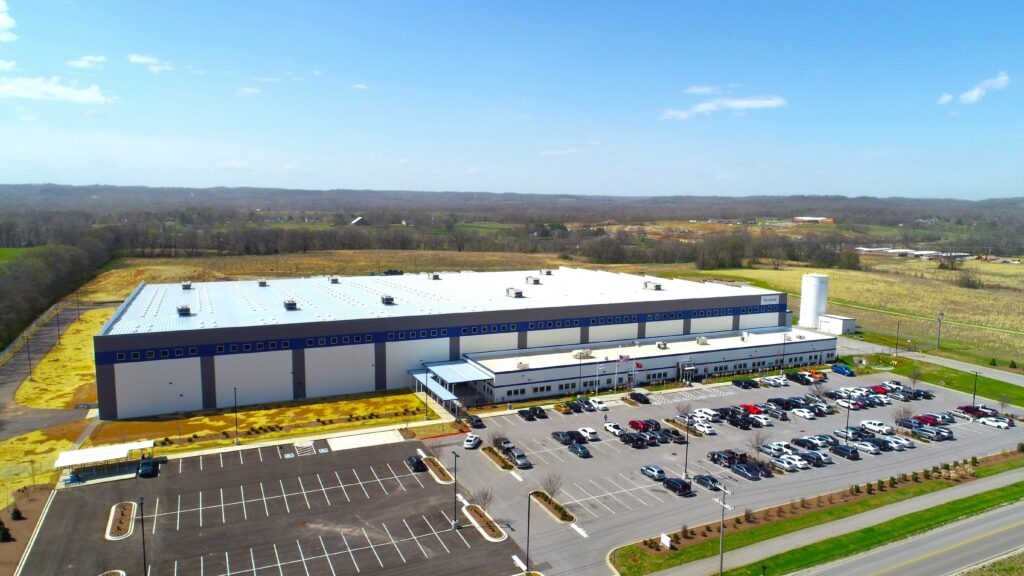
Q&A on the Industrial Real Estate Market with Agracel’s Jason Vaughn, P.E.
What is your outlook on the market in the next 12 months?
As for the industrial real estate market (IREM), it has performed very well over the past few years and will continue to do so in 2023, just at a slower pace – not quite a tortoise’s pace, but not a hare’s pace either. We have started to see the velocity of interest/projects slow to a more moderate rate in the markets that we serve here at Agracel – primarily secondary and tertiary markets. The performance of the IREM the past few years was fueled by supply chain disruptions, increased demand for inventory, and the e-commerce explosion mostly due to impacts from the pandemic. This demand is still there and Agracel expects to still see an increase in industrial activity for the remainder of 2023. Supply of buildings will eventually catch up to the demand and outpace it in early to mid 2024 providing a well needed correction to the cost of construction materials and resulting lease rates in some markets. Although some markets, like port centric markets focused on e-commerce, the demand for industrial space will outpace supply for the next 5-10 years.

How have interest rates impacted projects?
It appears interest rates will continue to rise as the Federal Reserve tries to reign in inflation to their 2% goal, but smaller hikes are more likely in 2023 eventually reaching 5.00% to 6.0% potentially – or higher. In 2022 alone, the Fed Rate increased from a year close in 2021 of 0.07% to a year close in 2022 of 4.33% or a 6,085% increase. This definitely impacts the way deals are structured and financed and the resulting cost impacts to our potential clients was certainly felt. We had several projects canceled due to the rising interest rates, volatility of construction material lead times, increases in construction pricing, and other factors. When uncertainty looms, decisions are delayed. Being a Monday morning quarterback for 2021-2022, the delayed decisions did not work in the favor of some development projects across the country since these uncertainties only became more volatile as time went on and costs continued to rise. What happens to investors/developers that paid premiums the past two years for properties, their leases include lower level annual escalators, and now they need to refinance? There are options, just not many good ones.
How would you describe the availability of financing? Access to capital?
Access to capital is really broken down between institutional grade properties (REITs) and all others. Institutional capital for strategic allocations is free flowing and their activity in the industrial market continues to rise. REITs traditionally outperform private real estate investments by a few percentage points each year. This delta is typically achieved by having lower fixed-rate debt, interest-only debt for a fixed term, and preferential tax treatment if they return an minimum share of earnings to investors. The investors of the REITs may be hit with higher capital gains taxes for the larger dividend yields that a REIT returns.
For properties that do not necessarily check all the boxes for institutional investment and bank financing is required, this financing has become more difficult over the past year. We are hearing from some banks that their appetite for commercial real estate is waning, their self-imposed caps for lending to this asset class are maxed out, and the credit underwriting has gotten more stringent – a trifecta of hurdles to overcome when considering bank financing.

GA, NC, and TN seem to be very aggressive on the large Mega Projects – what does SC need to do to be more competitive?
South Carolina has had tremendous success with large automotive projects starting with BMW in 1992 when they selected Spartanburg County as the home of their new US manufacturing facility. Back then BMW promised a $600M investment and the creation on 2,000 jobs. Today, BMW has invested over $11B in the facility and currently employs over 11,000 associates with over 270 direct suppliers with more than 40 of those located in SC. Not to forget, Volvo, Mercedes-Benz, Michelin, Bridgestone, GITI, ZF, Magna, Draexlmaier, OshKosh Defense, and many other automotive companies employing over 72,000 highly trained and skilled workers.
What is a mega site is a common question and there is no consensus or standard definition to the term. Some would state the minimum criteria to be considered a mega site is 1,000 acres with adequate utilities available. According to publicly available information, the following states with sites over 1,000 acres are: South Carolina: 17 with 4 listed as “Certified;” North Carolina: 14 with 5 listed as “Certified;” Georgia: 5 with 3 listed as “Certified;” Tennessee: 4 with 0 listed as “Certified.” All four of the “Certified” (another term with no consensus or standard definition) mega sites in SC are located in the Lowcountry with the likes of Boeing, Mercedes-Benz, Volvo, and others. The question then comes to available workforce. It is a question most every company asks us when considering any location for their new facilities. SC makes a good case for the workforce and has performed well attracting large investments from across the world the past 30 years. To further the effort, for the 2023-2024 SC Budget, GovernorHenry McMaster has asked for one-time allocation in the amount of $200M “to identify and secure properties for future mega site development.” We should celebrate the success of our neighbors, but know that SC will not be left behind in the pursuit of mega site development and attracting the best companies in the world to locate here.
Jason Vaughn is Director of Development, Southeast Region for Agracel
About Agracel – Established in 1986 by John M. “Jack” Schultz, Agracel, Inc. humbly began as a farmland investment company. As the years passed Agracel’s core focus turned from farm ground to industrial development in rural America. Today, Team Agracel has developed over 20 million sf of industrial space in 20 states.






